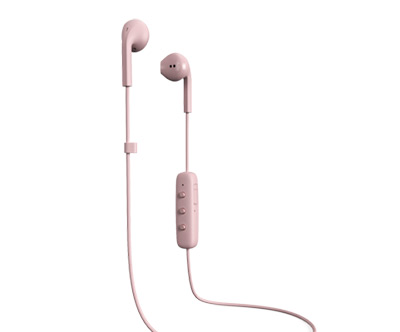 Afrikaans
Afrikaans  Albanian
Albanian  Amharic
Amharic  Arabic
Arabic  Armenian
Armenian  Azerbaijani
Azerbaijani  Basque
Basque  Belarusian
Belarusian  Bengali
Bengali  Bosnian
Bosnian  Bulgarian
Bulgarian  Catalan
Catalan  Cebuano
Cebuano  Corsican
Corsican  Croatian
Croatian  Czech
Czech  Danish
Danish  Dutch
Dutch  English
English  Esperanto
Esperanto  Estonian
Estonian  Finnish
Finnish  French
French  Frisian
Frisian  Galician
Galician  Georgian
Georgian  German
German  Greek
Greek  Gujarati
Gujarati  Haitian Creole
Haitian Creole  hausa
hausa  hawaiian
hawaiian  Hebrew
Hebrew  Hindi
Hindi  Miao
Miao  Hungarian
Hungarian  Icelandic
Icelandic  igbo
igbo  Indonesian
Indonesian  irish
irish  Italian
Italian  Japanese
Japanese  Javanese
Javanese  Kannada
Kannada  kazakh
kazakh  Khmer
Khmer  Rwandese
Rwandese  Korean
Korean  Kurdish
Kurdish  Kyrgyz
Kyrgyz  Lao
Lao  Latin
Latin  Latvian
Latvian  Lithuanian
Lithuanian  Luxembourgish
Luxembourgish  Macedonian
Macedonian  Malgashi
Malgashi  Malay
Malay  Malayalam
Malayalam  Maltese
Maltese  Maori
Maori  Marathi
Marathi  Mongolian
Mongolian  Myanmar
Myanmar  Nepali
Nepali  Norwegian
Norwegian  Norwegian
Norwegian  Occitan
Occitan  Pashto
Pashto  Persian
Persian  Polish
Polish  Portuguese
Portuguese  Punjabi
Punjabi  Romanian
Romanian  Russian
Russian  Samoan
Samoan  Scottish Gaelic
Scottish Gaelic  Serbian
Serbian  Sesotho
Sesotho  Shona
Shona  Sindhi
Sindhi  Sinhala
Sinhala  Slovak
Slovak  Slovenian
Slovenian  Somali
Somali  Spanish
Spanish  Sundanese
Sundanese  Swahili
Swahili  Swedish
Swedish  Tagalog
Tagalog  Tajik
Tajik  Tamil
Tamil  Tatar
Tatar  Telugu
Telugu  Thai
Thai  Turkish
Turkish  Turkmen
Turkmen  Ukrainian
Ukrainian  Urdu
Urdu  Uighur
Uighur  Uzbek
Uzbek  Vietnamese
Vietnamese  Welsh
Welsh  Bantu
Bantu  Yiddish
Yiddish  Yoruba
Yoruba  Zulu
Zulu types of idler in belt conveyor
Types of Idlers in Belt Conveyors
Belt conveyors are a fundamental element in material handling and transportation across various industries. A crucial component of these systems is the idler, which supports the belt and the material being transported. Idlers significantly influence the efficiency, performance, and longevity of belt conveyors. Understanding the types of idlers and their specific applications is essential for optimizing conveyor performance.
One of the most common types of idlers is the flat idler. This idler features a simple design with a flat surface that supports the conveyor belt. Flat idlers are widely utilized in applications where the material being transported is non-abrasive and the angle of the conveyor is minimal. They provide adequate support, but their limited shape may not be ideal for all materials.
Another prevalent type is the trough idler. This design consists of three rollers arranged in a V-shape, creating a trough that securely holds the belt and its load. Trough idlers are especially advantageous for conveying bulk materials, as they provide improved load containment and reduce spillage. They also enhance belt stability, making them applicable in steep incline conveyors.
Impact idlers play a critical role in protecting the belt and the idler system from the impact of falling materials. Situated near the loading points, these idlers typically feature rubber or other cushioning materials to absorb shock. This prevents excessive wear on the belt and minimizes damage, thereby extending the conveyor's lifespan.
types of idler in belt conveyor

For applications requiring increased support for high loads, heavy-duty idlers are essential. These idlers are designed to bear significant weight and are built with robust materials to withstand the stress and strain of heavy materials. They are often used in industries such as mining and construction, where the volume and weight of the materials are considerable.
In addition to these types, self-aligning idlers help maintain the belt's position
. Misalignment can lead to increased wear and increased maintenance costs, so self-aligning idlers automatically adjust to the belt's position, enhancing overall efficiency.Lastly, return idlers are crucial in the conveyor system, supporting the belt as it returns to the head pulley. These idlers prevent the belt from sagging and help maintain tension throughout the system.
In conclusion, selecting the appropriate idler type is vital for maximizing the performance and durability of belt conveyors. Each idler type serves a specific function and application, and understanding these differences can help engineers and operators make informed decisions when designing or maintaining conveyor systems. Proper implementation of idlers not only enhances operational efficiency but also contributes to the longevity of the entire conveyor system.
-
Revolutionizing Conveyor Reliability with Advanced Rubber Lagging PulleysNewsJul.22,2025
-
Powering Precision and Durability with Expert Manufacturers of Conveyor ComponentsNewsJul.22,2025
-
Optimizing Conveyor Systems with Advanced Conveyor AccessoriesNewsJul.22,2025
-
Maximize Conveyor Efficiency with Quality Conveyor Idler PulleysNewsJul.22,2025
-
Future-Proof Your Conveyor System with High-Performance Polyurethane RollerNewsJul.22,2025
-
Driving Efficiency Forward with Quality Idlers and RollersNewsJul.22,2025





























